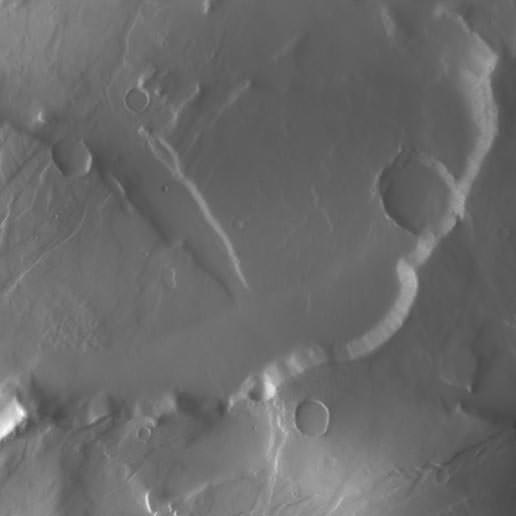[/caption]
Recently, the Dawn spacecraft – on its circuitous route to the asteroid belt -- used the gravity of Mars to provide a little 'kick' to the spacecraft's velocity. Universe Today finally had the chance to catch up with the team from the Dawn mission following this maneuver to find out how things went, and how the spacecraft is doing following the gravity assist operations. "The gravity assist accomplished exactly what we needed to get on course for Vesta," Dawn Chief Engineer Marc Rayman told UT. "In addition to the gravity assist, we decided to undertake some bonus instrument calibrations, taking advantage of flying by such a well-studied planet. In doing so, we obtained some performance data on some of our instruments." The image seen here of Mars' surface is one of the results of those calibrations.
Dawn will be visiting two different asteroids, Vesta and Ceres. Because of its distinctive ion engine, the spacecraft will be able to enter orbit around Vesta in August of 2011, remain there until May of 2012, then leave orbit and head to Ceres, arriving in February of 2015.
The thrusters work by using an electrical charge to accelerate ions from xenon fuel to a speed 10 times that of chemical engines. But what does this mean for a gravity assist – is there any difference between an ion engine versus and a chemical thruster in a gravity assist?
"In most ways, there is no difference," said Rayman. "We used the ion thruster to get on course for the gravity assist, but the spacecraft coasted for most of the 4.5 months before it reached Mars. When we had to refine the trajectory, we used the ion thruster because it is so much more efficient than conventional propulsion. Moreover, because the ion propulsion affords so much flexibility in the mission, we did not have to hit as small a 'window' at Mars." [caption id="attachment_27013" align="aligncenter" width="330" caption="Dawn's trajectory. Credit: JPL"]
[/caption] Generally, a gravity assist is used to increase a spacecraft's velocity and propel it outward in the solar system, much farther away from the Sun than its launch vehicle would have been capable of doing.
Dawn got as close as 549 kilometers (341 miles) to the Red Planet during the Tuesday, Feb. 17, flyby. JPL said that if Dawn had to perform these orbital adjustments on its own, with no Mars gravitational deflection, the spacecraft would have had to fire up its engines and change velocity by more than 9,330 kilometers per hour (5,800 miles per hour).
At maximum thrust, each engine produces a total of 91 millinewtons -- about the amount of force involved in holding a single piece of notebook paper in your hand. You would not want to use ion propulsion to get on a freeway: At maximum throttle, it would take Dawn's system four days to accelerate from 0 to 60 miles per hour.
Using the gravity of Mars was an important part of the Dawn mission that makes going to the asteroid belt possible.
Sources:
JPL,
email exchange with Marc Rayman
 Universe Today
Universe Today
